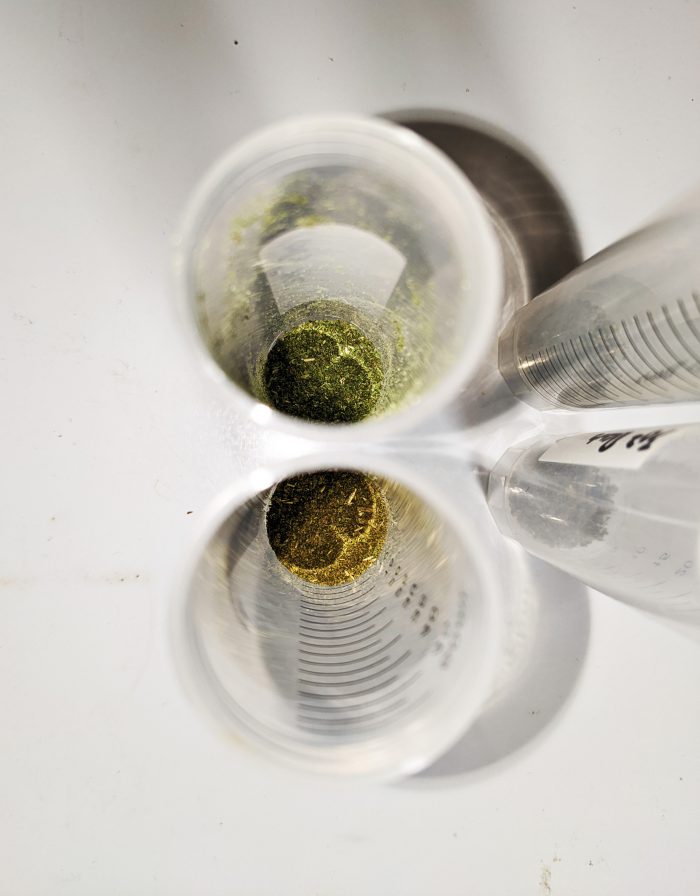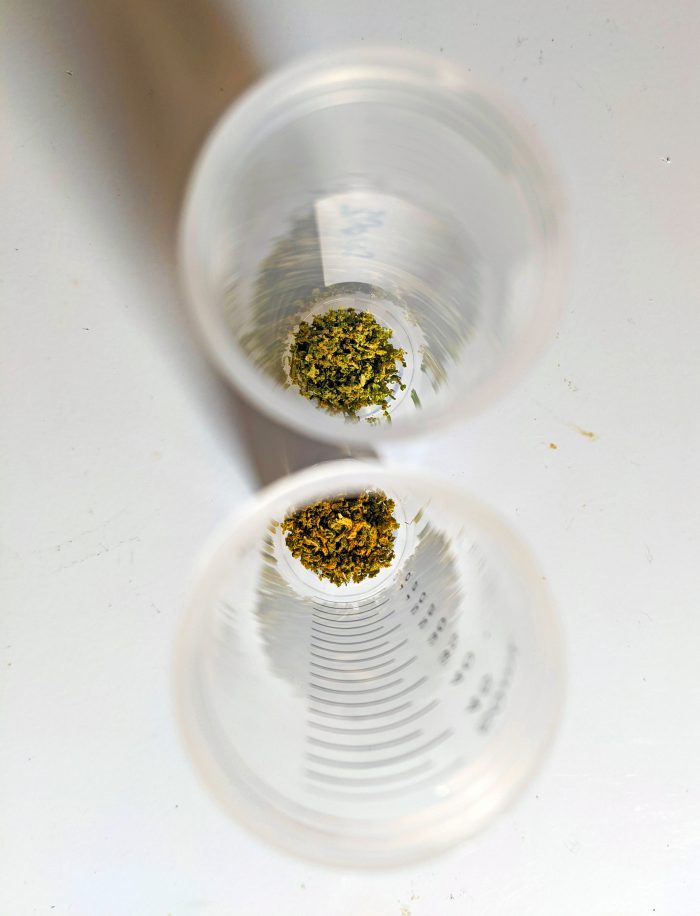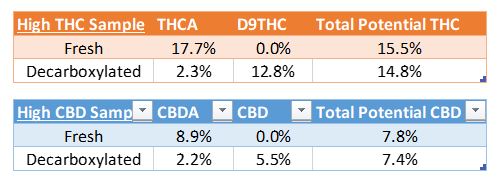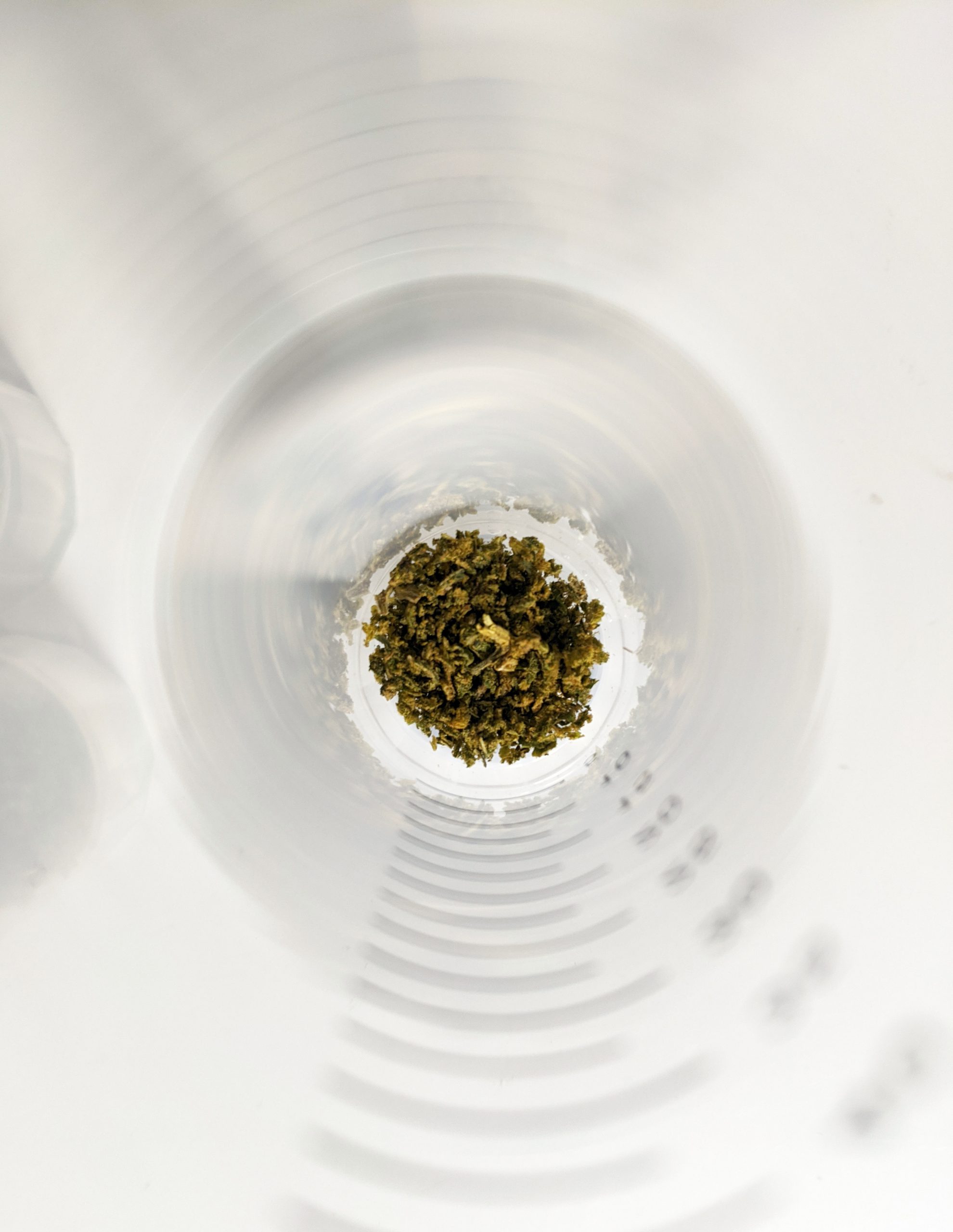By Dylan Wilks, CTO
Introduction
If you’re working in the hemp or cannabis field, you’ve likely already heard about Decarboxylation. When cannabis is heated, you change the cannabinoids from the “acidic” form, THCA and CBDA, to the “neutral” form, Δ9THC and CBD. If we zoom in to the molecular level, decarboxylation removes a C02 molecule from the cannabinoid. This CO2 turns to a gas and floats away, leaving the cannabinoid slightly smaller. That also means it weighs less. More precisely, it weighs 87.7% of its original weight after decarboxylation. If you were to completely decarboxylate a 10% THCA sample, you would find there is 8.77% Δ9THC.
This conversion is especially important if you’re growing hemp. That’s because the USDA rules use “Total Potential THC”. This is all of the Δ9THC plus all of the THCA multiplied by 0.877 and should equate to the total amount of Δ9THC left over after fully decarboxylating a sample.
This is great- now we can easily check our plants by running a LightLab and looking at the Total Potential THC (or total potential CBD). But does this equation hold up in the real world? Rather than assume it will, let’s try it!
Procedure
We gathered a high CBD hemp and a high THC cannabis plant and put them to the test. We ground up the samples and ran them on a LightLab as a “before” value. Unsurprisingly these were mostly CBDA for the hemp plant and mostly THCA for the high THC plant. Next, we baked the samples in the oven at 215 degrees F for 1 hour, stirring every 20 minutes. This should be enough to mostly decarboxylate the samples, but not enough to burn off any cannabinoids. Finally, we ran the decarboxylated samples and compared the results.

High CBD. Bottom decarboxylated. 
High THC. Bottom decarboxlyated.
Results and Conclusion
If the equation were to hold true in the real world, the “Total Potential” numbers in the last row would be identical. In both cases, the numbers were pretty close, within the error of a LightLab measurement.

It was interesting to note that in both cases the numbers were lower after decarboxylation. This could be due to some amount of cannabinoids getting vaporized, or perhaps something more interesting is happening –but that’s an exploration for another time. Regardless, for practical purposes the equation does in fact work as expected. Stay tuned for more Testing for Truth articles, or send us your own questions that LightLab can help answer!

